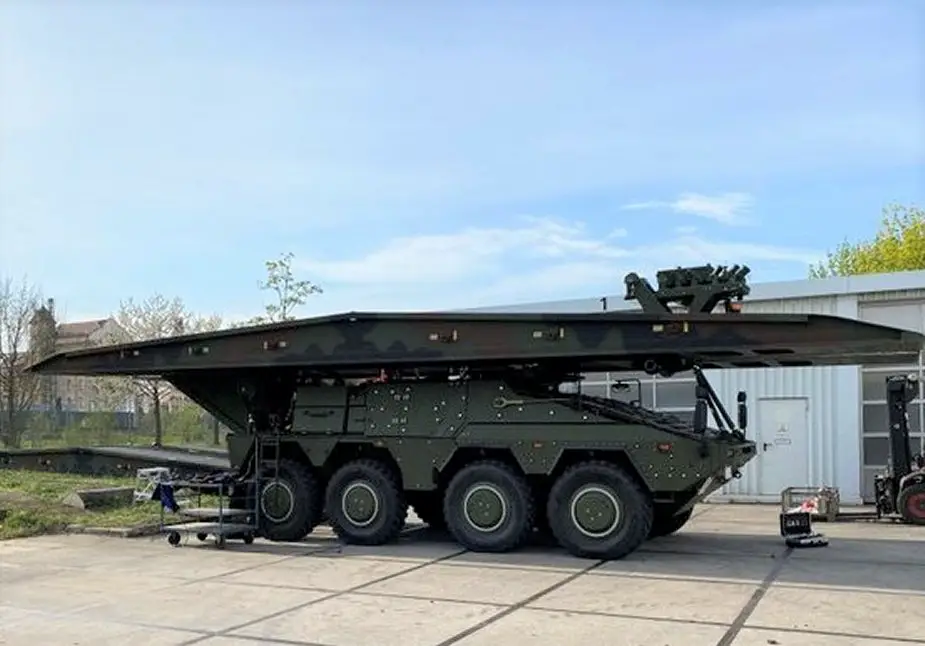Boxer armored vehicle unveiled with KMW Leguan bridging system
The Boxer is a wheeled multirole armored vehicle that can be configured to conduct different types of missions. The vehicle is based on a modular design consisting of two main parts including the driver/engine module and the removable mission module. A bridgelayer module is available for the Boxer that can be used to lay one 14 m length bridge in less than five minutes.
Follow Army Recognition on Google News at this link

Boxer MRAV Multi-Role Armored Vehicle with Leguan bridging system (Picture source: Twitter account of Nicholas Drummond)
The drive module of the Boxer 8x8 armored vehicle consists of the driver position located at the front right, with the power pack on its left. The mission module is a key (and unique) feature of Boxer, it allows the vehicle to be rapidly changed to meet different operational requirements. Boxer mission modules are pod-like units that are fitted to drive modules to form a complete mission variant vehicle. Mission modules are attached by four points and can be swapped within an hour under field conditions. The driver can access his compartment through the mission module or in an emergency via the large single-piece power-operated hatch above this position.
Thanks to its key feature, the Boxer can be configured as an armored personnel carrier, infantry fighting vehicle, command post as well as bridgelayer that can be used by engineer troops to assist militaries in rapidly deploying tanks and other armored fighting vehicles across gap-type obstacles, such as (and primarily) rivers.
The Boxer bridgelayer is fitted with a bridge mission module that enables the vehicle to launch two bridge types including a 14-meter MLC 100 or 22-metre MLC 50. The bridge launcher system doesn't use a scissor system but rather slides the two sections forward horizontally to reduce signature. The same launch system is used by Leopard 2 bridgelayer.
The fully automatic laying system enables bridges to be constructed in approximately five minutes. The tactical advantage of the system is to be found in its horizontal laying technique which preserves the low silhouette on missions. The operation is automated and performed by the driver via a system menu, but can also be performed independently by the commander.


























